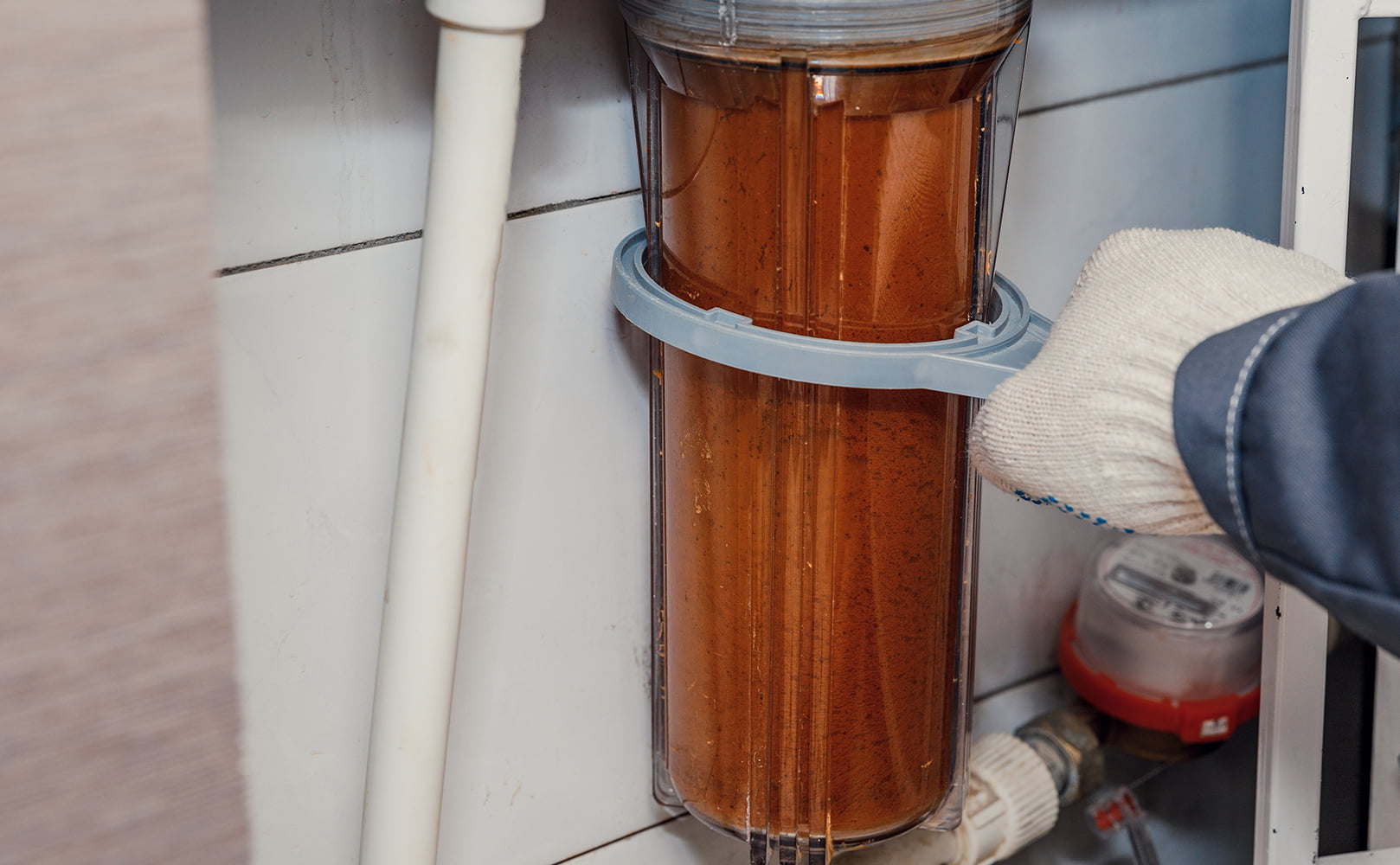How to Open a Sediment Filter? Learn Here!
Written by: Gene Fitzgerald // Last Updated: Aug 28, 2023
This page may contain affiliate links. If you buy a product or service through such a link we earn a commission at no extra cost to you. Learn more.
Opening a sediment filter is the first step to cleaning or replacing it.
However, things can go wrong if you don’t open it correctly.
In this article, we’ll explain how to open a sediment filter, what to do if your sediment filter housing gets stuck, and how to prevent your sediment filter from getting stuck in the first place.
Key Takeaways
Here’s how to open a sediment filter:
- First, turn off the water supply.
- Open all downstream water outlets.
- If there’s a downstream valve, turn it off.
- If there’s a pressure relief button, press it.
- Lastly, use a wrench to unscrew or open the filter housing.
How to Open a Sediment Filter
Ready to open your sediment filter? You need to get these tools ready first.
Tools You’ll Need
- An empty bucket
- Wrench (or spanner)
Next, you’ll need to follow this step-by-step guide.
Step 1: Shut Off the Water Supply
To prevent uncontrollable spills when you open your sediment filter, you must first shut off the water supply at the main valve.
If you have installed an additional inlet valve before your filter, you can shut that one off instead. Or, if your water filter has an inlet valve, you can simply turn that off.
Step 2: Open Downstream Water Outlets
Your next step is to open all outlets (taps, sinks) that are located near the water filter. Leave them open until all or most of the water has drained out.
Step 3: Close Downstream Valve
If you have a downstream (or outlet) valve, you should turn it off so that water does not flow backwards into the filter.
Step 4: Push Pressure Release Button
If there’s a pressure relief button, push it down to release pressure from within the filter housing. Leaving pressure inside the filter would make it difficult to open.
Step 5: Unscrew and Open the Filter Housing
Place an empty bucket beneath the filter housing to catch water, just in case there’s any left in the filter. Now grab your filter wrench and use it to unscrew the filter housing. Once it’s no longer tight, you should be able to easily open it.
Pro Tips for Stuck Sediment Filter Housings
Opening a sediment filter is pretty straightforward, but sometimes filter housings get stuck. Here’s what you can do if that happens:
Pressure Release
If your sediment filter contains too much pressure, it’ll be harder to open and even get stuck. An excellent tip for solving stuck filter housings is to switch on the bypass valve and push the pressure release button. Press down the button to release all water and air pressure within the filter.
If your filter does not have a bypass valve or pressure release button, make sure that you don’t skip steps one and two of opening a filter! Turn off the main water supply and open all downstream water outlets.
Using Your Bare Hands
Your hands could do the magic with stuck filter housings. If you hold the housing tightly and forcefully shift it to the left, you may be able to pull it off. To make this easier, make sure your hands are dry.
Wrenches
Another tip is to use a wrench (or spanner). First, fix the wrench on the stuck housing so that it holds it as much as possible. Then, set the plumbing line to rest on something and apply pressure to unscrew the housing with the wrench. If your water filter system does not come with a wrench, you’ll need to buy one.
Tapping
Deliver gentle and repeated taps on the filter housing using a rubber hammer. This works if your filter is stuck because of sediment buildup. The tapping will shift the buildup so that your filter may come off. Remember to tap softly to avoid damaging your filter.
Heat
You can also apply heat to expand and remove a stuck sediment filter. If you have a blow dryer, plug it in and direct it to the filter’s exterior. Once it expands, tap it with a rubber hammer and unscrew the housing with a wrench.
If you don’t have a blow dryer, you can pour warm water on the filter. You could also dip a towel in warm water and place it over the filter housing. The goal is to apply heat that moves the filter casing to expand.
Turn in Both Directions
Typically, you’ll turn a filter to the left when opening it. But when the housing is stuck, turning it in both directions can help. After turning it to the left, turn it to the right and hit the housing from beneath. Gradually, you’ll be able to remove it. This works if your filter is stuck because of hard particle buildup.
How to Prevent a Stuck Sediment Filter in Future
Dealing with a stuck sediment filter is stressful, so it’s best to avoid it. Here are a few tips to prevent your sediment filter from getting stuck.
Don’t Overtighten
When fixing your sediment filter, only tighten it as much as needed to keep the housing in place. If you overtighten the filter, it gets stuck the next time you try to open it.
O-Rings
You’ll find O-rings in the filter housing cap; they help to seal the cap to the housing inlet. Whenever you replace your filter cartridge, always check the O-rings. If they are broken or not in good condition, replace them. You should also ensure that they are in the correct position.
Silicone Grease
Another tip is to apply silicone grease when fixing a sediment filter. That helps you install the filter easily without over-tightening it — so you can replace it easily in the future. Use only food-grade silicone grease of course.
Dirt and Debris
A buildup of dirt and debris can also get your sediment filter stuck. You can avoid that by cleaning your filter regularly.
If you have any questions about how to open a sediment water filter please don’t hesitate to leave a comment below!
Information provided on BOS is for educational purposes only. The products and services we review may not be right for your individual circumstances.
We adhere to strict editorial guidelines. Rest assured, the opinions expressed have not been provided, reviewed, or otherwise endorsed by our partners – they are unbiased, independent, and the author’s alone. Our licensed experts fact-check all content for accuracy. It is accurate as of the date posted and to the best of our knowledge.



